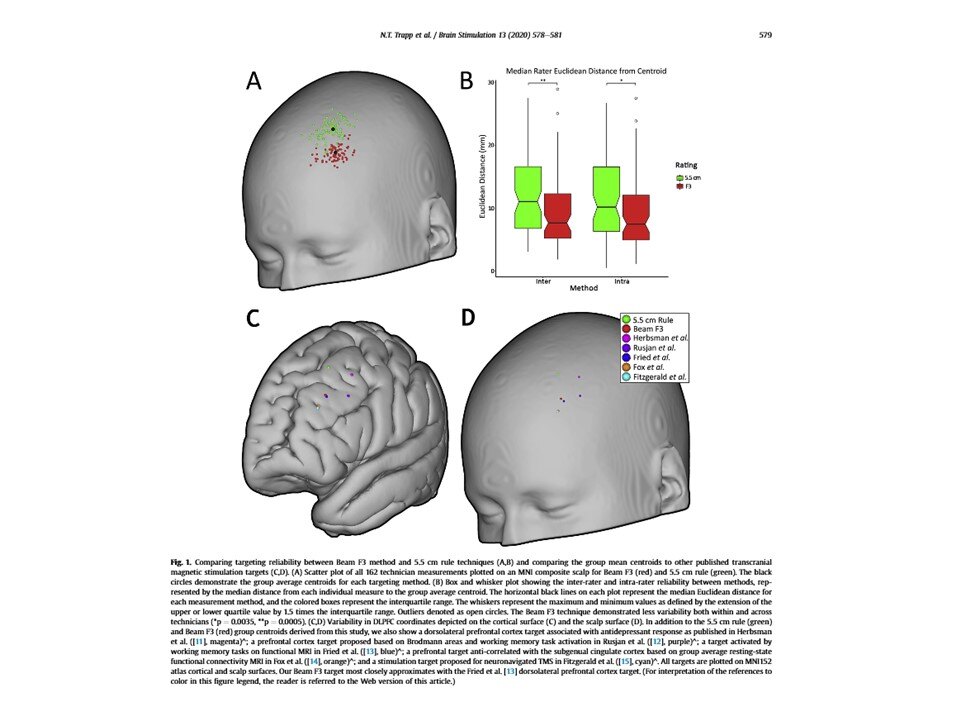September 30, 2020 - Smart TMS

September 30, 2020 - Smart TMS

Methods for targeting specific areas of the brain for the treatment of depression using TMS
Image source: https://www.brainstimjrnl.com/article/S1935-861X(20)30014-0/fulltext
There are two common methods used for targeting the right area of the brain when treating patients with depression using transcranial magnetic stimulation (TMS).
TMS treatment for depression focuses on targeting the left dorsolateral prefrontal cortex (DLPFC). Beam F3 and the 5.5cm rule are the two most commonly used approaches to targeting this area of the brain.
A recent paper looking at these different methods found the Beam F3 method to be more reliable; demonstrating better precision and reliability compared to the 5.5 cm method.
In the study, three trained TMS technicians used both methods, performing repeated targeting that was tracked using MRI scans. The results indicated that the Beam F3 method had better reproducibility and precision, however, more studies are needed to look at the comparative efficacy of the different methods.
At Smart TMS, after identifying measurements based on anatomical landmarks of the skull, we also implement the Beam F3 methods to locate the different regions of interest to target with TMS. In the first session of treatment, time is dedicated to the measuring of the head, using a fabric cap placed on the patient’s head, in order to identify the correct placement of the magnets. Once these initial measurements have been taken, the cap is re-used and kept for each patient, so their treatment positioning is unique to them.
A link to the full study can be found here.
A link to more information about TMS, how it works and what to expect can be found here.
Other Articles
Jan. 2, 2020
May. 14, 2025
Jul. 16, 2025
Copyright © Smart rTMS Ltd. 2025 - Company number 09921994